 |
||
|
||
| ||
At the moment we have the results of two "entry-level" disks testing: Quantum lct15 and Western Digital Spartan. Two disks from Western Digital WD153BA with spindle rotation rate 7200 rpm and WD450AA with 5400 rpm of 45 GBytes capacity were tested. All the tests results are indicated by diagrams, and there are some references to the complete tables of results. The results of testing appeared under the control of Windows NT operation system with the NTFS file system. QuantumQuantum lct15 is noiseless because Quiet Drive Technology (QDT) is used. However all modern disks work silently and it is difficult to catch the difference especially through the ventilator noise. The set is standard: Shock Protection System II (SPS II) and Data Protection System (DPS). The bit density is 15 GBytes on a slice that quite justify the rotation rate reduce. The bar contains disks of capacity 7,5, 15, 20,4 and 30 GBytes. I tested 20-GBytes disk. Western DigitalWD Spartan is a new name of DA series. The spindle rotation rate is 4500 rpm, the bit density is probably 15 GBytes on a slice too. It is a direct competitor of lct15. By WD tests their Spartan WD75DA exceeds even Seagate U10 with 5400 rpm spindle rotation rate. The availability of 2Ìbytes buffer confirms it. Besides more habitual disks WD Caviar of BA and AA series were tested. BA series with 7200 rpm spindle rotation rate at the moment is represented by 10.2, 15.3 and 20.5 gigabytes disks. The bit density is 10.2 GBytes on a slice. Data Lifeguard data protection technology, the case similar to IBM - everything is all right. And WD Caviar 450AA pleased at once. The characteristics are excellent - at the spindle rotation rate 5400 rpm the bit density is 15 GBytes on a slice! The exact characteristics of tested disks are indicated in the table. TestsThe testing was conducted on the following system:
This time Disk Transfer Rate test under Windows 98 control was conducted for some disks in two modes. In the first mode the system was loaded from the separate disk standing on the second channel of the controller HotRod, the tests were launched from it. The tested disk was absolutely empty (the tested disks were connected as master to the first channel of the controller). In the other mode the system was loaded directly from the tested disk and the tests were launched from it. In this case the contain of all tested disks was identical. Cloning was effected with the help of the utility Norton Ghost. The testing under Windows NT was conducted with the separate system disk. The standard set of the tests - WinBench 99 (Disk WinMarks and Disk Inspection Tests) and Adaptec ThreadMark 2.0 was used. WinBench 99 test was repeated three times, Adaptec ThreadMark 2.0 test - five times. The averages are indicated in the tables. Adaptec ThreadMark test is not factual enough so it is offered to be changed on Intel IOMeter. As usual at first - WinBench 99. At first - Windows 98, then NT. 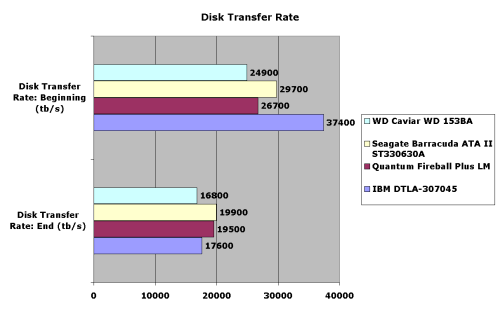 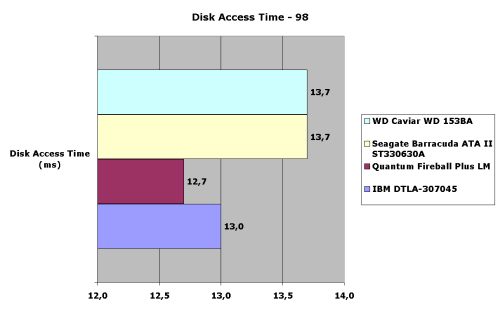 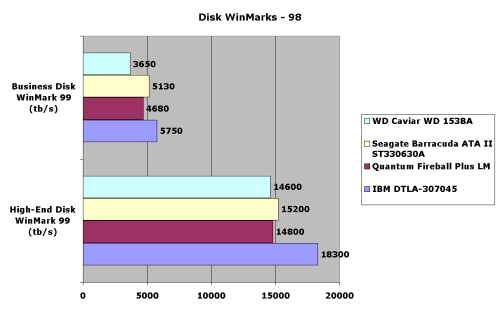 The results of WD153BA disk are rather low in comparison with the results of the previous review participants. There is no real competitor for IBM DTLA. At first here is the diagram of reading from the "clean" disk. 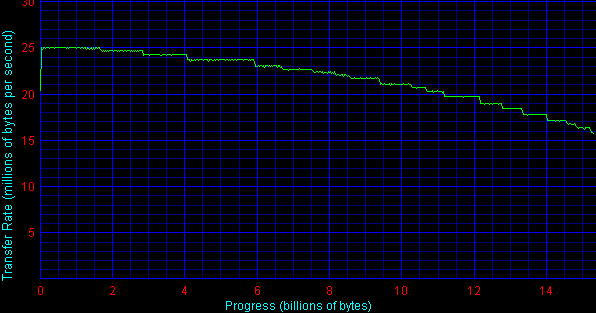 Then - the same disk with the installed system: 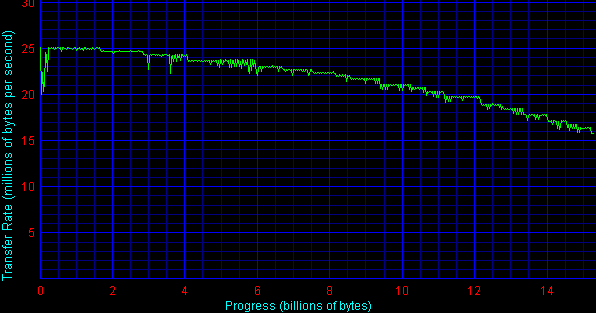 See the difference. Now - Windows NT  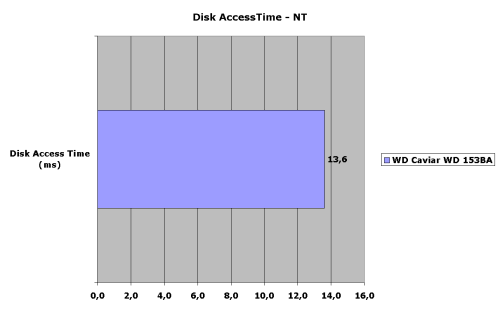  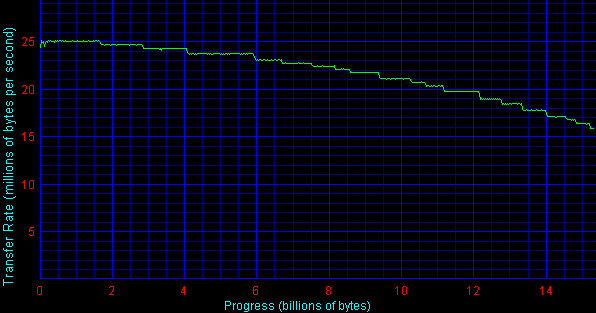 Here is only WD therefore let's take it as the standard:) Lets start with their younger brothers. 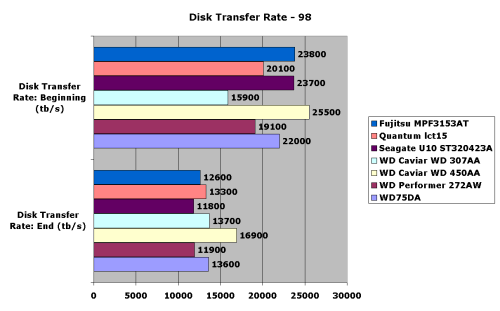 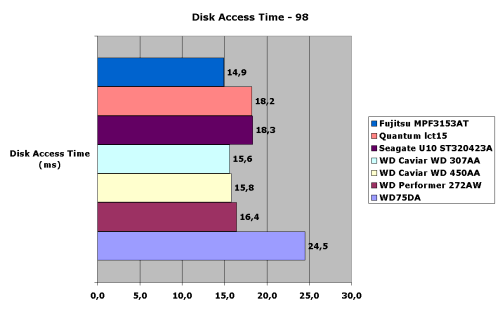 As we see by the exchange rate WD Spartan is worse than Seagate U10 but better than Quantum lct15. The leader is WD450AA. The exchange rate for this disk is more than for WD153BA! And what about WinMarks? 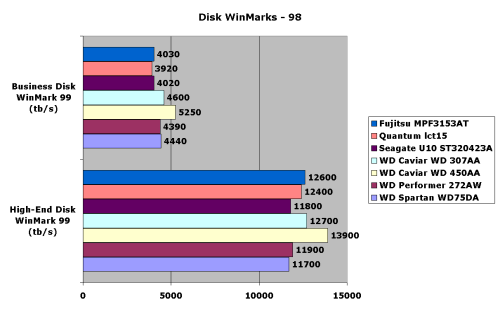 How interesting! First in Business Winmark test WD Spartan exceeded not only Seagate U10 but also Fujitsu MPF AT! It is a quite good model for office computer. But in High-end Quantum was perfect, probably by the less access time (though the access time for WD Spartan doesn't differ a lot from the stated value - 24.5 ms against 22 ms stated). The leader is WD450AA again. Moreover at Business Winmark test this disk follows IBM DTLA. The result is worthy! Then here are the diagrams. For lct15 the same picture is watched: 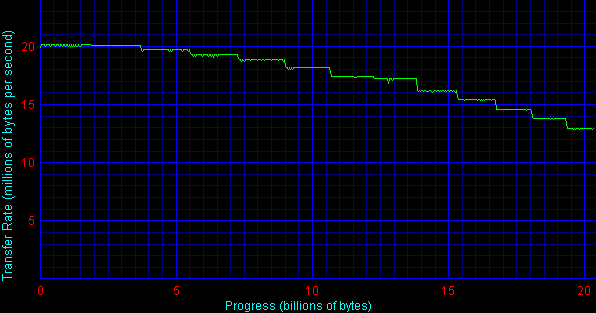 The clean disk
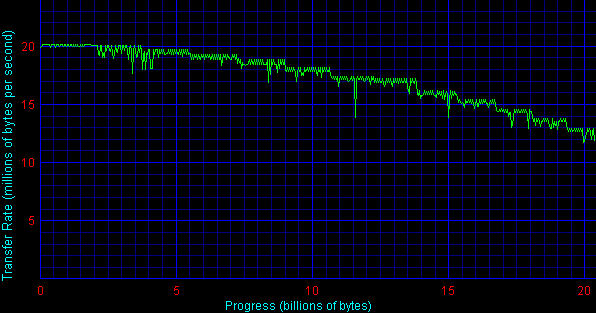 The disk with the installed system
For WD450AA there is no such difference in behaviour ^ 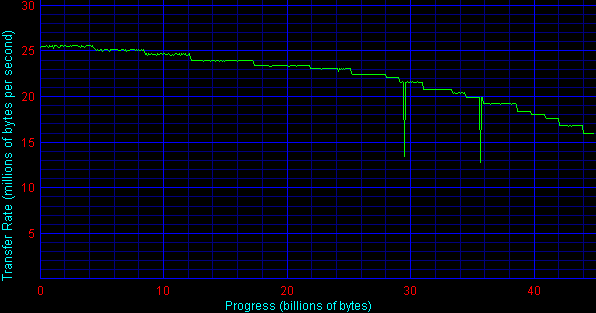 The clean disk
The disk with the installed system The similar experiments with WD Spartan were not conducted, I shall give the "clean" disk diagram: 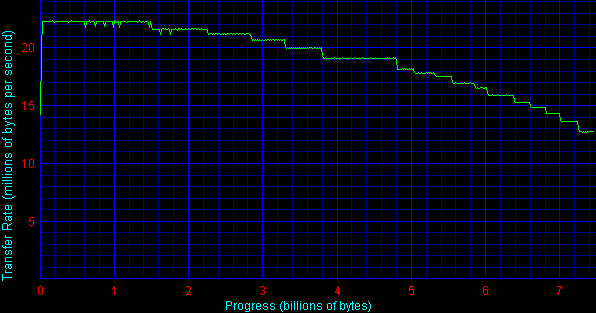 Now - Windows NT 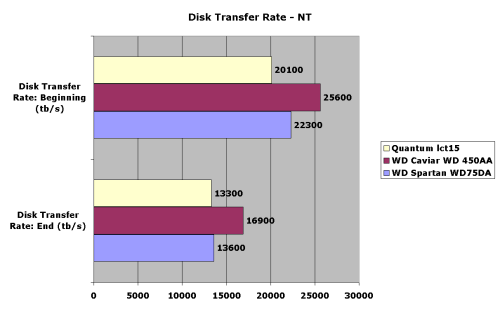 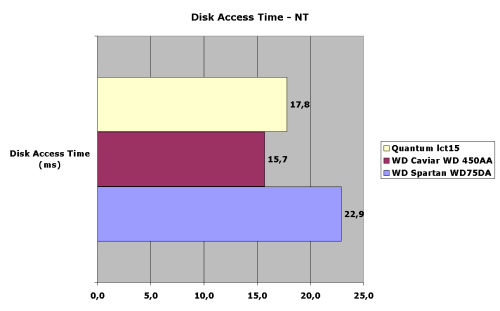 In common without essential variations.  Here is only one variation - WD Spartan has taken the second place by all tests. As for the diagrams nothing unexpectable is present. 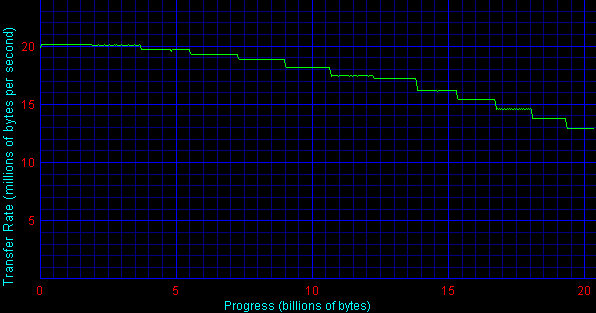 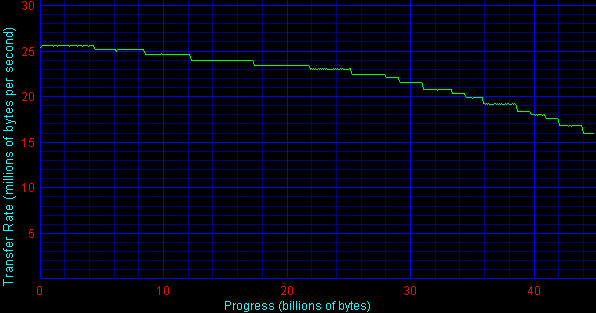 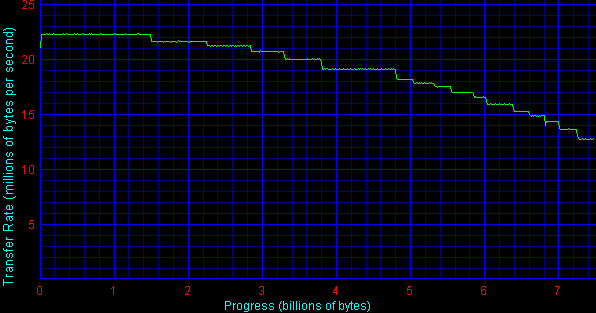 Here is the complete table of results. Now - Adaptec. For the beginning - Windows 98. As before the results for the disks with the spindle rotation rate 7200 rpm are given separately from the remaining disks. In the first column the average weighted value of the exchange rate in Byte/per sec. of 64 tests is indicated. During the tests the readings and records operations by blocks of 512 bytes, 1, 2, 4, 8, 16, 32 and 64 KBytes by one, two, three or four thread at the same time, with usage of standard Win32 API calls are carried out. In the second column - the processor load at tests. 
In multistream applications WD is much more sure. Among slower disks the situation is the following: 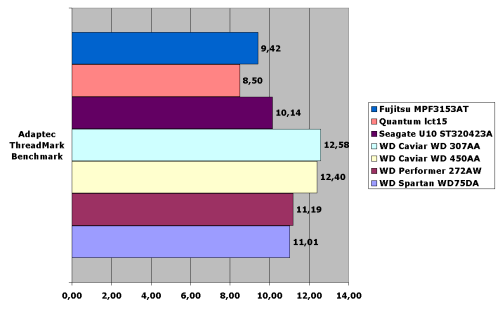
The obvious outsider is Quantum probably because of the small buffer size. Unexpectedly WD450AA lost its leadership. By the results of disks testing under Windows NT I shall give one common table. 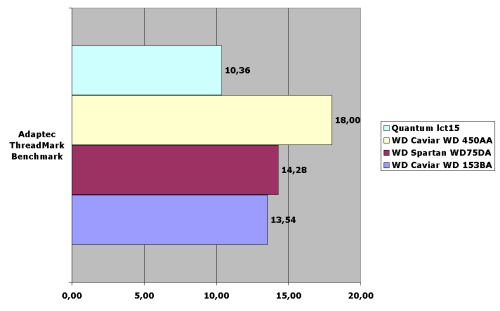
WD Spartan results are higher than for Caviar BA!!! Most likely it depended on the test. SummaryFirst about the diagrams of linear reading rate. Certainly the usage of ''clean" disks allows to get more beautiful diagrams, but on the other hand the disk is purchased to record the information on. Therefore the information value of the formated disk test is doubtful for me. Secondly - the new disks with the reduced rotation rate are successfully included in the niche of office computers providing a quite good operating rate in business applications. Thirdly- WD450AA became the new leader among disks with 5400 rpm. Only IBM DTLA on 5400 rpm can be its real competitor. Write a comment below. No registration needed!
|
Platform · Video · Multimedia · Mobile · Other || About us & Privacy policy · Twitter · Facebook Copyright © Byrds Research & Publishing, Ltd., 1997–2011. All rights reserved. | ||||||||||||||||||||||||||||||||||||||||||||||||||||||||||||||||||||||||||||||||||||||||||||||||||